On an October night in 1979, a navy man named John Collins rode his Triumph motorcycle over to the offices of a Honolulu health club. He brought nothing but a box of paperwork.
Collins, credited with starting a quirky competition called the Hawaiian Iron Man Triathlon, had just been reassigned to the mainland United States. He desperately needed someone to run the third edition of the event. The first two had 15 competitors each.
He handed the box to Hank Grundman and his wife, Valerie Silk.
Inside that box was what now might be considered a billion-dollar idea.
"No money changed hands," Judy Collins, John's wife, said in a recent email exchange. "No papers were signed. John handed our box of triathlon paperwork to Grundman."
Like most big and successful companies, Ironman likes to tell the story of its humble origins, twisting mythology into marketing. But it usually leaves out the most intriguing part – about a box that changed hands in the night, and about the people who are still angry about it, nearly four decades later.
It was Silk, Grundman’s wife at the time, who spun the contents of that box into gold. Ironman grew, exponentially and steadily, into the world’s most iconic test of endurance and one of the globe’s premier sports brands. It is now owned by a Chinese conglomerate called Dalian Wanda Group, which paid $650 million for it in 2015. Ironman puts on more than 260 races in 44 countries, with 680,000 annual participants.
What makes Ironman unusual is that none of the people there at the creation of the event made any money from its success. Forty years later, that still rankles some of them, who say it should never have been given away in the first place, or sold by Silk nearly a decade after it was handed to her to organise.
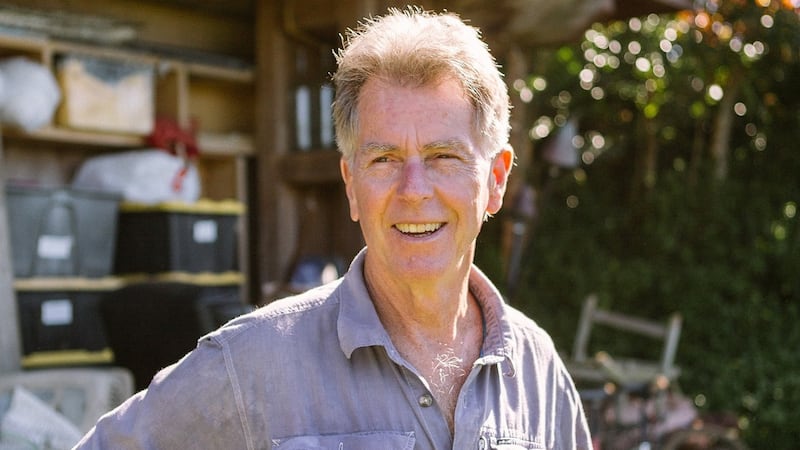
No one is bothered more than John Dunbar, the runner-up in the first two races. He has boxes, too, but they are filled with court papers asserting his role and his rights in the birth of the event. They never amounted to anything.
Dunbar is a main character in Ironman’s origin story, a bit of a legendary figure. He led the first race, in 1978, until a couple of cold beers near the end did him in. He finished second the next year, too, in a pivotal contest as epic as the first, nudging Ironman toward fame and fortune.
Dunbar believes Ironman belongs to him and 14 others, including Collins, who competed in the first race. He has made the argument for decades, even after the courts told him it was too late, even after other original competitors who stood beside him, including the original champion, Gordon Haller, shrugged and gave up on claiming a part of what they still think should be theirs.
"Maybe Wanda Corp will say, 'Let's make this right,'" Dunbar said. He laughed. "I'm dreaming, huh?" Now 65, Dunbar remains lean and tan. His face has the strong bone structure of Clint Eastwood but none of the intimidation. His eyes are deep blue. His hair is full and greying. He still swims in the ocean and rides bikes on the roads, but he climbs and hikes more than he runs. He had a hip replaced 12 years ago.
In October, Dunbar was home on Maui when, on the next island over, 2,500 contestants lined up for the Ironman Triathlon. It was the 40th anniversary of the event, and dignitaries from the race’s modest early days, including several of the original 15 competitors, were there.
Dunbar was absent, as usual. He does not get invited to the Ironman these days.
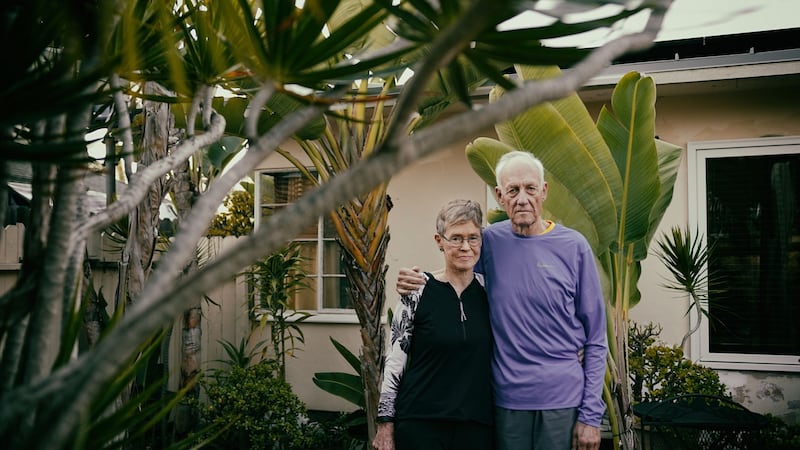
A colourful origin story
As with most stories, it helps to go back to the beginning. Ironman’s website explains it this way: “During an awards banquet for the Waikiki Swim Club, John Collins, a naval officer stationed in Hawaii, and his fellow athletes began debating which athletes were the fittest: swimmers, bikers or runners. Later, he and his wife, Judy, who had both participated in new competitions known as triathlons in San Diego, decided to combine three of the toughest existing endurance races on the island. On Feb. 18, 1978, 15 competitors, including Collins, came to the shores of Waikiki to take on the first-ever ‘Hawaiian Iron Man Triathlon.’”
More colourful versions of the story were passed through the decades, often by John Collins himself and through articles, books and Ironman’s own marketing materials. They usually included military men, bravado and beer.
Today, John and Judy Collins want to recraft the tale, largely to secure Judy’s role as co-creator. In a series of email exchanges with the couple, Judy Collins said they came up with the idea privately many months before the awards banquet of Ironman lore.
“We never told the entrants how and why we came up with our idea,” Judy Collins wrote. “Maybe that is why a few of the original 1978 finishers have an incorrect version of Ironman origins. That includes John Dunbar.”
Consider that mere context for this story. What matters most is what happened next.
Before the first event, John Collins wrote a three-page rule book.
“First Annual Hawaiian Iron Man Triathlon, 0700 18 February 1978,” it said in handwritten letters at the top. (The name was later melded to “Ironman.”) There was a hand-drawn map of Oahu, with a dotted line tracing the rough outline of the course, beginning and ending in Honolulu. “Swim 2.4 miles! Run 26 1/4 miles! Bike 112 miles! Brag the rest of your Life!”
The other pages contained 10 typed rules. One urged that the event be a “personal challenge as opposed to a competition.” Another noted that the vast course would have few monitors.
“The ‘honor system’ must prevail!” Collins wrote.
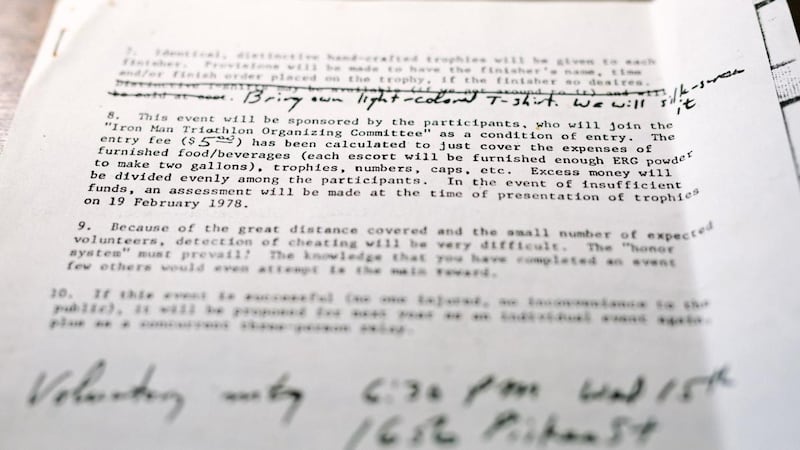
But it was No. 8, which set the entry fee at $5, that later caused the most trouble.
“This event will be sponsored by the participants, who will join the ‘Iron Man Triathlon Organizing Committee’ as a condition of entry,” Collins wrote.
“That way,” Judy Collins said in a recent email, “if you sued anybody you would also be suing yourself. We thought it was pretty clever.”
But when Ironman grew big years later, Dunbar and others interpreted the rule to mean that the 15 participants each owned an equal fraction of Ironman.
“I’m not denying he was the guiding force behind it,” Dunbar said of Collins. “But we were participants in the event. It was put into concrete form that we all had a piece of this.”
In 1978, no one imagined what it would become. Dunbar was 24 at the time, a former Navy Seal who was attending college in Honolulu. He had a 13-minute lead entering the marathon, the final leg. But Haller, a Naval Reserve lieutenant and part-time taxi driver, caught him midway through the run.
The men traded the lead several times, but Dunbar was fading. His support crew – a friend driving Dunbar’s van – ran out of water, so Dunbar chugged a Budweiser, then another. Other competitors nourished themselves with soda and candy, and Collins stopped for a bowl of chili. It was a different time.
Dunbar disputes the enduring reports that he suffered hallucinations. “I was not running into parked cars,” he said.
Haller cruised to the finish in 11 hours 46 minutes. He was welcomed by a small gathering. Dunbar was second, 34 minutes behind.
Collins, the ninth of 12 to complete the challenge, made small trophies for the finishers. He bent and soldered small metal tubes into a stick figure, an “iron man,” with a hexagonal nut for a head. (Aptly, a hole in the head.)
The second Ironman, in January 1979, also had 15 starters and 12 finishers, but it attracted a Sports Illustrated reporter named Barry McDermott. His rollicking story, spread over 10 pages, focused mostly on three men: Haller (who finished fourth), Dunbar (who showed up in a Superman costume and finished second) and the winner, a San Diego bar owner named Tom Warren.
McDermott described Dunbar as “a blond, open-faced fellow who is very good-natured and shy around strangers. He ran in a women’s race last year wearing a T-shirt that read TOKEN. But there is a serious side to Dunbar, and he had seethed ever since his 1978 defeat. When people mime his hardened competitive spirit, they clench their fists and make chomping, biting gestures, evidently comparing him with an implacable snapping turtle.”
The story was Ironman’s spark. “ABC’s Wide World of Sports” signed up for the third event, along with 108 competitors, in January 1980.
By then, though, John and Judy Collins were gone to the mainland. They were relieved to know that the event, now in the hands of a couple who ran some Nautilus fitness centres, would survive, at least for one more year.
Dunbar is among those who still contend that it was not the Collinses’ race to give away – that it belonged to the collective group of original competitors, only one of whom was John Collins.
“I have respect for John and his wife,” Dunbar said. “But it hits me here” – he tapped his chest – “as a fellow Navy man, that he didn’t consider the team.”
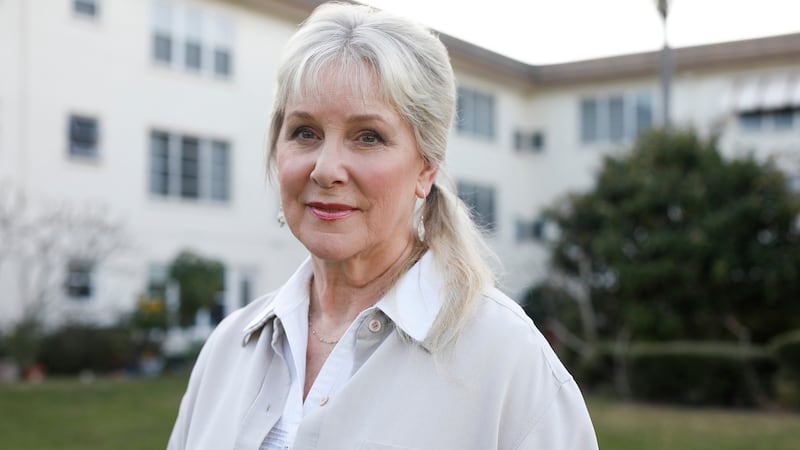
Who Owns What?
Valerie Silk was 29 at the time. She was not an athlete and had no interest in endurance sports.
“After the first event, I could see that it needed a race director, and it was something I wanted to try my hand at,” Silk, now 68, said in a recent interview from her home in St Petersburg, Florida. “So I stepped away from the clubs, turned those over to my husband, and I took on the race. And he was happy for me to do it.”
The couple divorced in 1981, but not before signing an article of incorporation with the state, creating a business called Hawaiian Triathlon Corp.
“I was so not a business person,” Silk said. “My husband and I had set up a corporation for the Nautilus clubs, so that’s what I thought would be necessary.”
Silk moved the 1981 event from Oahu to Hawaii’s Big Island. Then, with Ironman growing rapidly (the October 1982 race had 850 starters), Silk brought in a minority partner (49 per cent) for $145,000 and bought out her ex-husband’s stake.
“We certainly weren’t making any money those first years, but it had the appearance that it did,” Silk said. “People used to walk around looking at the banners from Bud Light and that sort of thing and say, ‘Boy, somebody’s making a lot of money off this event.’”
Dunbar had not competed in Ironman since 1979, but he began showing up in 1982, selling T-shirts and trophies. He presumed a part of Ironman still belonged to him and other original competitors, he said. Why would the whole race belong to Silk, a woman he had never met?
Silk said no original competitors, including Dunbar, showed interest in Ironman until it appeared to be making money. Some still competed.
“I changed the rules wholesale, we moved it off-island, eliminated the rule for mandatory individual support crews, I created my own race form – I changed everything,” Silk said. “And I never heard a peep from anybody.”
Hawaiian Triathlon registered the Ironman trademark in 1983. On the form, Silk called herself “president” of the company and checked a box that read “originator of mark.” Later that year, Silk’s lawyer sent a letter to Dunbar demanding “you immediately cease manufacture, sale and advertising of this trophy”.
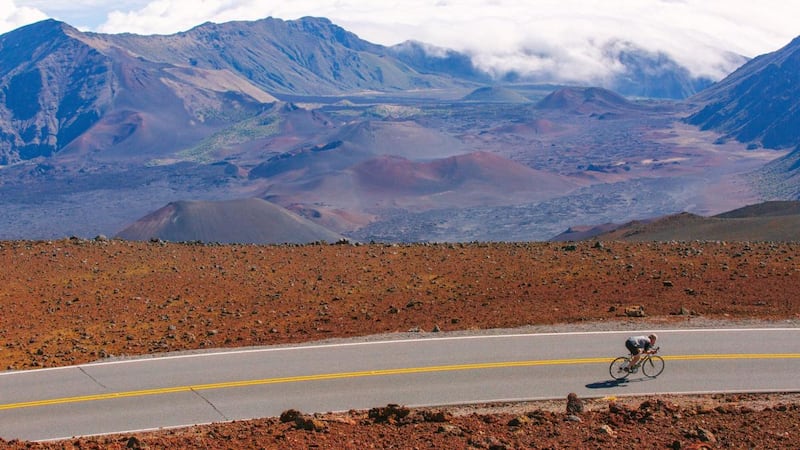
Dunbar did not go quietly. In 1984 and 1985, he and lawyers – including his father, John Dunbar Sr, a Navy court judge – sent letters, too, claiming rights to Ironman. The dispute simmered in the background of Ironman's success. In 1986, Silk and Ironman handed out prize money for the first time. On the race's 10th anniversary, in 1988, Silk invited the original competitors, including Dunbar, to the event.
There were 1,200 contestants that year and a growing array of Ironman-branded events around the globe. Silk was looking to sell.
“My great desire for the Ironman was that I would be able to put it in the hands of people who could make it bigger and better than I was able to, or had the desire to do,” Silk said. “I wanted it to be cared for because it was my kid. It was my baby.”
In 1989, Silk agreed to sell to a group based in Florida calling itself World Triathlon Corp, led by a longtime Ironman competitor and eye surgeon named James Gills. Silk has said that the sales price was in the vicinity of $3 million – roughly split with Silk's partner, and much of it lost to taxes and lawyers' fees.
Six original competitors – Dunbar, Haller, Ian Emberson, Ralph Yamata, Archie Hapai and Henry Forrest – filed for a temporary restraining order in Hawaii Circuit Court to prevent the sale. Dunbar's father was their lawyer.
They said they were original members of the Ironman Triathlon Organizing Committee, with “equal membership voting rights and liability sharing.” They claimed that Hawaiian Triathlon “expropriated the performance, commercialised it and commenced producing it” despite protests from Dunbar and others.
Haller, the winner of the first Ironman, has competed in 18 Ironmans in Hawaii (and more elsewhere), including the first 13. When Dunbar approached him and said they should sue Hawaiian Triathlon, Haller went along with the suit. It lives in court records as Gordon W. Haller, et al. v. Hawaiian Triathlon Corp.
“I was happy to join it, once I followed his logic,” Haller said from his home in Arkansas. “I never expected to make billions of dollars at it. I just thought we should have a little piece of it, as intellectual property of some sort.”
The sale to World Triathlon proceeded, but the lawsuit dragged through years of filings and appeals. Ultimately, in 1993, the court ruled that a six-year statute of limitations in Hawaii barred the suit. The transfer to Silk and Grundman, the court said, occurred in 1980. The 1989 lawsuit came too late.
“All of it was so unnecessary,” said Silk, who has had no ties to Ironman since and works as a patient advocate at an eye clinic. “That’s what was so frustrating about it. He had free legal because of his daddy, and he was just keeping the legal dime running on me. It was very costly.”
Silk remains frustrated that five other original competitors, most of whom she did not know, joined Dunbar’s suit.
Emberson, who finished fourth in the 1978 race, was one of them.
“If you talk to Dunbar, he’s a pretty persuasive guy,” Emberson said in a phone interview. “I’m sure we made Valerie’s life hell for a while. But in a way I felt, was it really yours to turn around and sell and make a lot of money from? It really belonged to the original competitors.”
Dan Hendrickson, 11th to finish the first Ironman, did not join the suit.
"Frankly, I don't know how Valerie Silk took ownership, but I felt the ship had sailed," said Hendrickson, whose son, comedian Andy Hendrickson, is working on a documentary about the original event. "I wish I had the foresight to see that we did do something more formal and protect our inheritance from the event, but we didn't do it."
Haller, the original champion, said he was barred from competing in Ironman after his participation in the suit, so he helped Dunbar organise triathlons on Maui from 1994 to 1998. They were called “Iron Maui” and “the world’s toughest Ironman.” Dunbar registered trademarks and handed out medals that read “Ironman Finisher.”
Haller eventually was welcomed back. Inducted into the Ironman Hall of Fame in 2003, he was in Kailua-Kona in October, on the 40th anniversary of his victory, to compete at 68. A wreck in the cycling leg slowed him down, and he withdrew midway through the marathon. Recently retired from years as an analyst for Walmart, he plans to spend time as a motivational speaker.
He is a firm believer in Ironman. But he still thinks he and others were cheated of their original stake.
“If you’re an actor and you’re on a TV show and they show reruns of it, you get a residual on that,” Haller said. “It seems like we should get something like that, because we created it. And they certainly never bought it from us.”
John and Judy Collins, the characters in the Ironman story who might have reason for harbouring the biggest regrets, were there for the 40th anniversary in October, too. They were feted as the founders and said they were thrilled with Ironman’s continued success.
“We will always feel lucky and grateful that Ironman fell into Silk’s hands,” Judy Collins said in an email. “It was good fortune. Not only did Silk keep our long-distance triathlon going, she nurtured Ironman triathlon around the globe.”
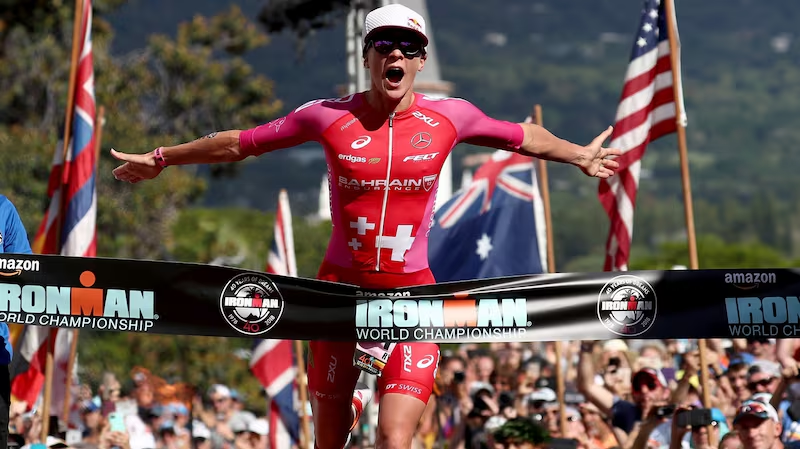
A nearly $1 billion corporation is born
On a perfect day last fall, Dunbar waited for his next guests. They rent rooms, either in his old house or in the new building with the wide view over the trees, all the way across the Hana Highway to the famous surf of Maui's North Shore.
The place has none of the manicured gloss of the resorts down in Kaanapali or Wailea. It is two acres of grass and banana trees, a bit wild and untamed, which kind of describes Dunbar, too.
In person, Dunbar comes across as a thoughtful man seeking only fairness and practicality. His bookshelf includes works by Aristotle, Socrates and Descartes, books by Thomas Sowell (The Quest for Cosmic Justice) and Saul D Alinsky (Rules for Radicals) plus survival books and old National Geographics.
But he is a litigious sort, his name all over legal filings, and persistently aggrieved. With little provocation you will hear stories about his battles with the Maui police, Airbnb, neighbours, a farmers market and his own family. To him, they are the unreasonable ones.
“People sometimes say to let it go,” Dunbar said. “But I can’t until I think there’s justice.”
After his Maui triathlon ended in the 1990s, Dunbar resumed selling Ironman trophies and T-shirts. World Triathlon noticed. Dunbar ultimately lost that case, too.
In 2008, World Triathlon sold to an investment firm called Providence Equity. The price was undisclosed, but one report said it was between $50 million and $80 million.
In 2015, after years of aggressive expansion of Ironman events, Providence sold to Wanda Group. Its sports division, based in Guangshou, is led by Philippe Blatter, nephew of former Fifa president Sepp Blatter.
Wanda reportedly paid $650 million for Ironman and agreed to take on debt. The value of the transaction was estimated at $900 million.
Dunbar shakes his head at it all. After chopping down bunches of ripe bananas on his property, he left through a door of the cluttered, unfinished ground-floor storage room-office-kitchen-bedroom of his guesthouse.
There was no drywall. An old Ironman trophy, with a nut for a head, sat high on the naked door frame, coated in dust and spider webs.
Dunbar returned with a box. Inside were loose court documents from his failed fights over Ironman. Unlike the one that John Collins delivered in the Honolulu night nearly 40 years ago, with the makings of a billion-dollar brand, the contents of this box turned into nothing.
“People might say it was for the money,” Dunbar said. “For me, it was the principle.”
Dunbar flipped through the pages, wistfully pausing now and again, like someone leafing through an old scrapbook. That is all the box was now – memories, not worth anything to anyone else. – New York Times



















